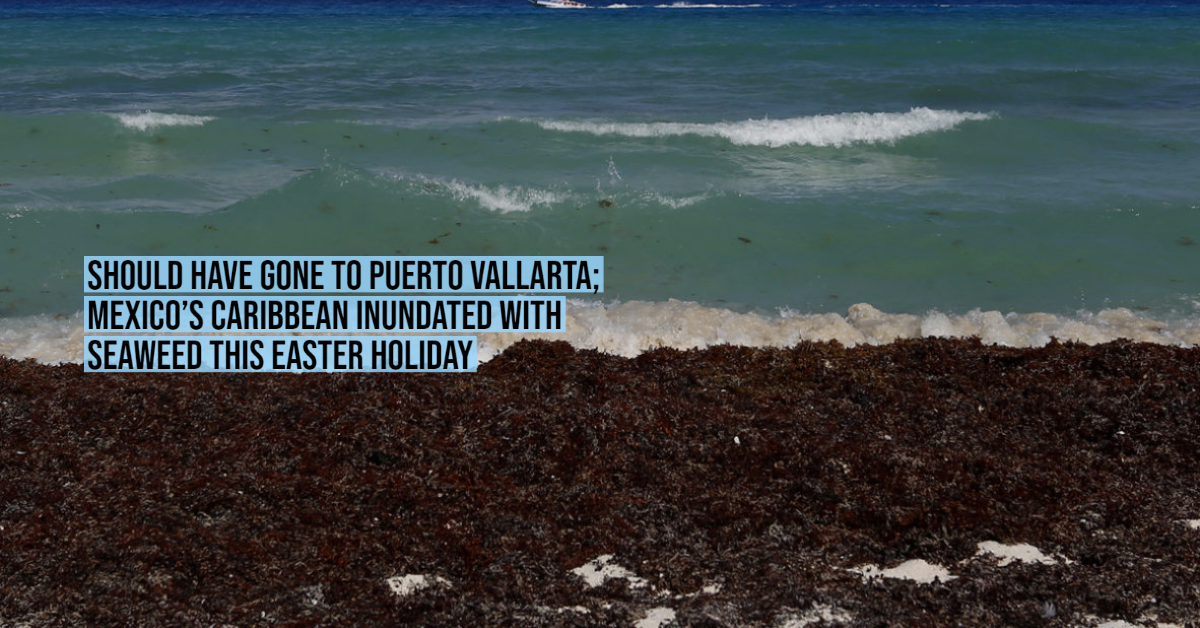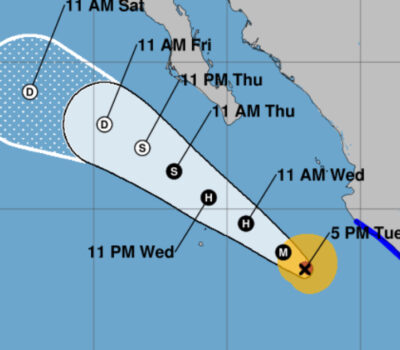A few days before the start of the Easter holiday season, one of the most important tourist areas in Mexico, the coasts of the state of Quintana Roo, Mexican Caribbean, face the massive sargassum runoff, affected mainly beaches of the Riviera Maya, Mahahual, Xcalak, Tulum and some of the Cancun hotel zone.
State authorities pointed out that just last weekend, 3,300 tons of sargassum were collected in the resort of Playa del Carmen.
The director of the Quintana Roo Tourism Promotion Council, Darío Flota Ocampo, told the media that during the Easter holiday period, from April 11 to 24, hotel occupancy will be at 90% in most of the state, especially in the north, where destinations such as Cancun, Playa del Carmen, Tulum, Isla Mujeres, Cozumel, and Holbox are located.
In Cancun, through the official pages of social networks of the direction of the Federal Maritime Land Zone (Zofemat), the publication of a sargassum traffic light for certified beaches was implemented, which establishes that for beaches such as Marlin, Ballenas and Delfines present moderate flow of sargassum and in Playa Coral it is abundant.
Another of the traffic lights available so that tourists and the general population can consult which are the most affected beaches is the one prepared by the Sargassum Monitoring Network on the Facebook social network, which includes the entire state.
For the cleaning of certified beaches, in the resort of Cancun, there are crews with more than 100 workers. So far this year, 1,965 tons of sargassum have already been removed from Del Niño, Las Perlas, Coral, Marlín, Ballenas, Delfines and Chac Mool beaches.
Recently, the Secretary of the Navy (Semar) reported that to attend to this seaweed landing season, they have 11 coastal sargassum vessels that will be distributed in the areas with the highest landfall.
So far, 300 anchors have been placed for the installation of barriers in Puerto Morelos, Playa del Carmen, and Mahahual, where only 480 meters of barriers have been installed.
As part of the operation, Semar carried out the maintenance of tractor vehicles with sweepers, which will be delivered to the municipalities of Isla Mujeres, Puerto Morelos, Tulum, and Othón P. Blanco.
Esteban Amaro, director of the Sargassum Monitoring Network, considered that eight years after the massive landing of sargassum began on the coasts of Quintana Roo, the need to change the strategy is becoming more and more evident because what has been done so far “didn’t work”
Amaro highlighted that the methodology used until now, which consists of collecting sargassum on the beach, “in addition to being expensive, it is insufficient” due to the thousands of tons that arrive on the busiest days.
The University of South Florida noted in a report that the amount of sargassum doubled from January to February.
Amaro explained that the current weather conditions, which favor strong winds from the southeast, are throwing the sargassum towards the beaches because as spring entered the winds began to change, the sea currents began to change, and at this time one to two degrees more are registered in sea temperature, which favors the reproduction of sargassum.
Amaro, a hydrobiologist by profession, anticipated that the massive sargassum spills will continue until May and there will be a small break between June and July, but it will return with more force between August and September.
Sargassum originates from the Sargasso Sea, located in the Atlantic Ocean, between the coasts of the United States and Europe.
However, since 2014 a large portion of it has broken off and settled between the coasts of Africa and Brazil, from where sea currents move it towards the Caribbean Sea.
According to scientific research, it is deduced that the causes of the increase may be the increase in temperature in marine waters and the discharge of organic matter waste into rivers in Central American countries, which accelerates the life cycle and reproduction of the algae.
The algae is currently capable of doubling its biomass in 11 days, whereas before it took 50.
A few days before the start of the Easter holiday season, one of the most important tourist areas in Mexico, the coasts of the . . .












